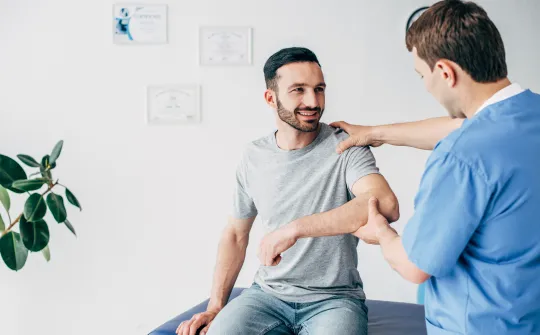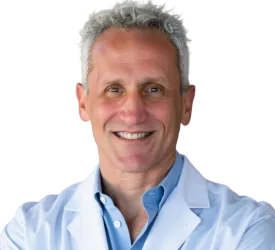
Shoulder Reconstruction Surgery
Restore Shoulder Stability
The shoulder joint plays an essential role in providing strength and range of motion of the arm. A number of injuries can lead to shoulder instability, causing pain, weakness, and loss of function. Orthopaedic Specialists of Austin perform surgical shoulder reconstruction to restore stability, allowing a successful return to athletics and other activities.
Dr. Edward Seade is a board-certified shoulder surgeon at OSA, experienced in arthroscopic and adult reconstructive surgery. He offers solutions for patients suffering from Bankart tears and recurrent shoulder dislocation. To schedule a consultation and find out if shoulder reconstruction or another treatment can help you, contact our Austin, TX, practice today.

Our Shoulder Expert
About Shoulder Instability
A healthy shoulder is made up of an extremely flexible ball-and-socket joint supported by soft-tissue ligaments. Some patients, especially athletes, suffer repeated injuries to the shoulder, which can stretch and tear these stabilizing tendons and ligaments.
A Bankart tear is a common injury that can lead to shoulder instability. Repetitive overhead arm movements in sports or weight lifting can cause a Bankart tear, as can falling onto an outstretched hand. Symptoms include reduced strength, pain, a feeling of looseness in the joint, a clicking sound coming from the joint, and arthritis of the shoulder.
Shoulder instability is often caused by shoulder dislocation or subluxation, in which the bone is pushed fully or partially out of the socket. If this happens once, it can increase the likelihood of a recurrence. In severe shoulder instability, the joint remains loose because the surrounding ligaments, capsule, and cartilage are stretched or torn. There may be recurrent dislocations, along with chronic pain, swelling, popping or grinding sounds, and loss of sensation and function - even partial paralysis.
Shoulder Reconstruction
Shoulder reconstruction surgery can treat shoulder instability and prevent dislocation. This surgery allows athletes to get back in the game, and increases productivity and overall quality of life for many patients.
Shoulder reconstruction surgery, also called a Bankhart Procedure, repairs ligaments to restore stability and security for the loose shoulder joint. A torn labrum (a piece of fibrocartilage that holds the ball of the joint in place) is reattached to the shoulder socket, and overstretched capsules and ligaments are repaired, tightened, and repositioned. This procedure can be performed arthroscopically using small incisions. Some cases require an open surgical procedure.
In some cases, shoulder instability is aggravated by bone fracture or bone loss. For these patients, a Laterjet operation may be recommended. This procedure involves bone grafting, or transferring a piece of bone from one section of the shoulder to the front socket. The bone and attached muscles add stability to the joint, with the bone acting as a barrier to block the shoulder from slipping out of the socket. This method is very effective in treating and relieving some types of shoulder instability.
After Surgery
Following shoulder reconstruction surgery, patients are given specific instructions for use of an arm sling and other solutions to foster healing. Complete healing takes place over several weeks, and patients will gain strength and mobility with rehabilitative exercises and physical therapy.

